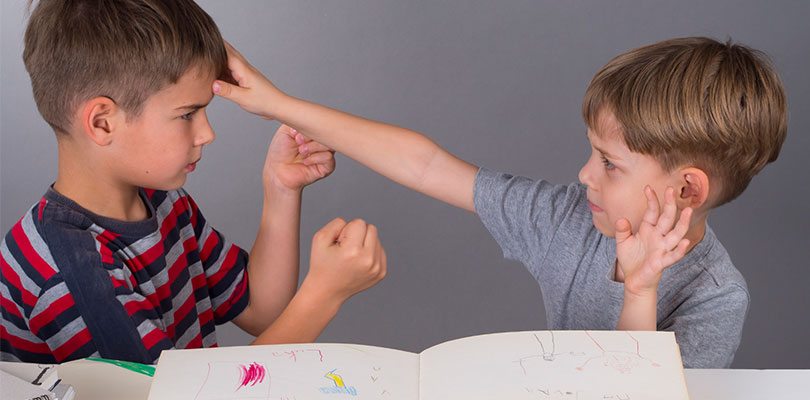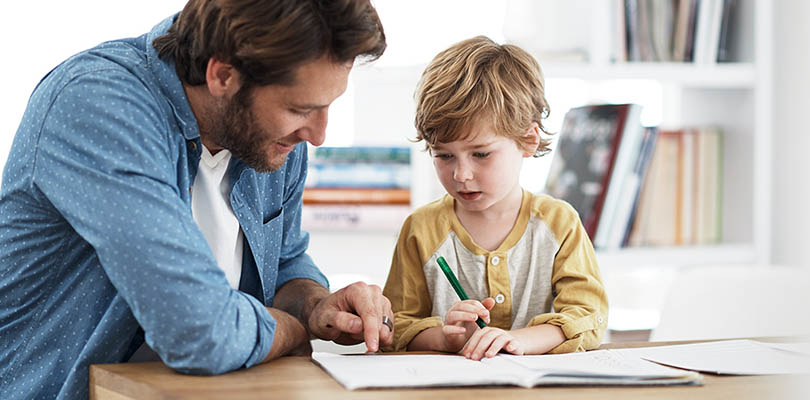Photo Credit: vesmil / iStockPhoto.com
Where Anger Comes From, How to Cope, and Tips to Overcome It in the Future
Anger in attention deficit hyperactivity disorder (ADHD) isn’t quite as straightforward as it appears. While you can certainly spot an inappropriate emotional outburst, many kids and adolescents with ADHD aren’t aware of being overly angry. Those who do realize they’re angrier than they ought to be often don’t know where the anger is coming from.
Undoubtedly, you’ll want to help your child learn to calm and control their emotions. After all, not only is your own sanity at stake, so is your child’s future; ADHD aggressive behavior that goes unchecked for a long time can turn into a chronic problem that interferes with social growth and quality of life. Luckily for you, there are plenty of ways to understand and diffuse the aggression.
Understanding ADHD Aggression
ADHD brings along impulsivity, sensory overload, poor forethought, and an array of other cognitive challenges that can feed an angry response. So, while an average person might respond with anger to a particularly irritating situation, a child with ADHD could have that same response to a much milder situation.
Potential sources of anger are sometimes vague and can stay hidden for a long time. For instance, many ADHD children live with some sort of anxiety, and that can significantly increase their “fight or flight” response, leading them to act out quickly and severely. Overstimulation of the senses is another common ADHD problem that can lead to angry outbursts in what seem to be perfectly normal situations.
Anger is difficult to handle and it can make you question your part in the problem, but there are some helpful facts to keep in mind when you’re feeling overwhelmed with your child’s behavior:
- Venting anger is a normal process. Everyone has moments of frustration and anger, but most people can diffuse those emotions without distressing themselves or others too much. In contrast, those with ADHD aren’t as good at channeling their feelings as they lack the important venting mechanism.
- Impulse control is at the root of the problem. Remember aggressive behavior is tied to a problem with impulse control, not an inborn mean streak or desire to harm everyone around them. Impulses are difficult to change, but there are ways to train the brain for better control.
- Meltdowns do not reflect your parenting ability. Your child isn’t acting out because you’re a bad parent. Their behavior stems from within, so a biochemical reaction that lies outside your sphere of influence.
ADHD aggression isn’t deliberate. Kids aren’t looking for a way to act out in order to hurt you; they’re just following intense impulses.
On the other hand, ADHD can raise the risk of developing other behavioral disorders, like oppositional defiant disorder (ODD) or conduct disorder (CD), which involve willful aggression against peers, parents and authority figures.
Children with ODD or CD are at a greater risk of substance abuse, delinquency and antisocial personality as they grow into adults. If your child’s behavior is deceitful, harmful, cruel, or deliberately damaging to people and property, it might be time to see a specialist for a deeper investigation.
Experts suspect that around 50 percent of kids with ADHD also have ODD. However, most moderate ADHD aggression can be improved with some specific coping techniques, adjusted parameters, and loving guidance.
Diffusing an Argument or Tantrum
The most predictable aspect of ADHD is that it’s unpredictable. Everything could be going just fine, and then an outburst, confrontation or meltdown can derail the friendly situation. No single technique will work all the time, but you’ll be better able to handle aggressive behavior if you have some plans in place beforehand.
Find an Outlet
ADHD outbursts can kick in anywhere, anytime. Sometimes you’ll be in public, and that can make things even more stressful. Arm yourself with a few physical techniques to help your kid get rid of the aggressive energy quickly and safely before it boils over.
Deep breathing is a very effective way to calm down, no matter how old you happen to be. Slow things down and have your child breathe a few very deep breaths, maybe focusing on a particular thought or calming image.
You could also carry along a few balloons in your pocket and have your child blow one up when they begin to lose emotional control.
Be Positive With Suggestions
It may seem like a small issue, but the way you phrase your response when your child acts out could make a difference in how they internalize the advice. Saying “don’t hit” might not ring as clearly as “use your words instead of hitting.”
The more clear, concise and detailed you can be, the easier it is for a child to interpret and apply the request. Essentially, you’re leaving no room for confusion or uncertainty.
There are many different ways of treating ADHD without meds, examples include lifestyle and dietary changes to building a routine.
Have Patience
When emotions are getting out of control, it can be really difficult to stay calm and collected. Your natural reaction might be to match your child’s tone and volume, but that probably won’t lead to a resolution.
It’s difficult, but try your best to be patient, reasonable and thoughtful in the way you respond. Speaking calmly and slowly can have a remarkable impact, especially when you keep a steady gaze and firm physical stance.
Empathy is another excellent virtue to exercise: tell your kid you understand they’re angry, and you know it must feel awful. Tell them you’d like to understand why they’re angry in order to help them out.
Work Together
Parents and children have different roles to play: you need to guide and teach your child, and in return, they need to respect your word. However, when anger enters into the equation, it can be helpful to push those roles closer together rather than take on an authoritarian stance.
When emotions are high, ADHD kids will have trouble appreciating or retaining strong commands. Instead of demanding or judging them, once the storm has passed, you might ask them their thoughts on the matter. How do they think they could reign in their temper next time?
Take a few minutes to brainstorm possible ways to calm their behavior. Write a list and keep it on the fridge so you can both refer to it. When your child has helped create the plan for the next time a temper tantrum hits, it’s more likely that they will allow you to enforce the solution you’ve both come up with.
Building Better Habits
Rewarding good behavior and punishing bad behavior is certainly not a new approach, but it can still be an effective one. The key is to fine-tune your praise and your negative consequences so your child knows exactly what to look forward to and what to avoid.
You know your child, and you’ll know what motivates them. However, if you’re stuck, here are some specific, measurable and enticing rewards to provide for good behavior:
- An extra hour of playtime
- Choosing the movie to watch with the family
- Picking out a special dessert for the weekend
- One-on-one time with you, and you alone
Consequences for bad behavior should be similarly precise, but try to find a reasonable balance. Involve “thoughtful time,” an opportunity for your child to really consider what they’ve done, and why it’s worth squashing that impulse in the future.
Punishments, like rewards, will depend on your child’s age (and the severity of the crime). Here are some suggestions:
- Time-out
- Writing a letter of apology
- Losing a special privilege
- Choosing a chore to do from the chore list
Reassurance Is Important
Dealing with an emotional outburst will drain a lot of your energy, and it’s natural to simply walk away after you’ve managed to bring the situation back under control. However, an aggressive episode can leave an ADHD child feeling confused, sad and irritated, too.
It’s a good idea to take some time to reassure them of their abilities rather than leave them dwelling on their faults.
Don’t hesitate to remind your ADHD child that you love them, they’re good, and they’re capable of good behavior. Positive reinforcement is important for a child’s self-esteem and will influence the way they choose to conduct themselves in the future. A physical embrace will make them feel safe, and can immediately diffuse the strong emotions.







